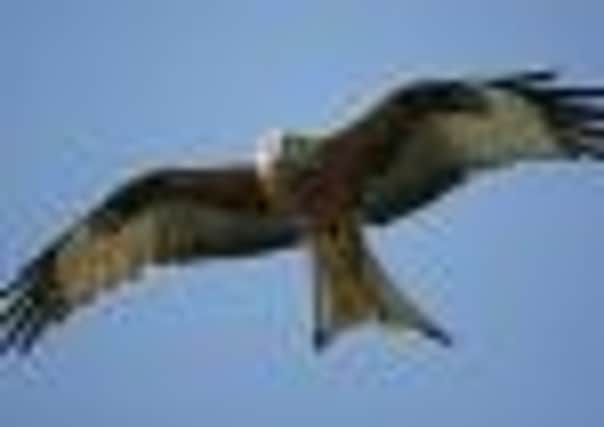Bird of prey poisoning at 6-year low in Scotland


Last year, only 16 raptors were killed as a result of illegal poisonings – 12 fewer than in 2010 and the lowest death toll since the so-called “hotspot map” for birds of prey poisonings was first published six years ago.
Scottish environment minister Stewart Stevenson said he hoped the continuing downward spiral signalled an end to what he branded an “outdated, dangerous and cruel practice”.
Advertisement
Hide AdAdvertisement
Hide AdThe latest map, published by the Partnership for Action Against Wildlife Crime (Paw), shows that illegal poisonings last year were spread across six police force areas, with two cases in Lothian and Borders, three in Northern, two in Strathclyde, and one each in Grampian, Tayside and Dumfries and Galloway, resulting in the deaths of a total of 16 birds.
They included seven buzzards, four red kites, two sparrow hawks, and one golden eagle. In 2010 there were 22 incidents, in which 28 birds of prey were poisoned.
Most of the birds were poisoned by two banned pesticides – carbofuran and chloralose, but strychnine was used to kill two peregrine falcons in Strathclyde.
Mr Stevenson said: “This is the fourth year we have published these maps and I very much welcome the reduction in poisoning numbers.
“I hope this proves to be the beginning of a continuing reduction in such cases, leading to the end of this outdated, dangerous and cruel practice.”
He added: “Birds of prey are a magnificent spectacle in our countryside. They are valued by locals and visitors alike.
“However, a small minority continues to persecute them for their own selfish ends. I hope we are beginning to see a change in attitude.”
Duncan Orr-Ewing, head of species and land management for RSPB Scotland, said he hoped to see the drop in poisonings reflected in increased populations and ranges of some of Scotland’s most vulnerable species.
Advertisement
Hide AdAdvertisement
Hide AdHe added: “The annual Paw maps are now one of the key tools used for targeting the enforcement resources at the right places.
“At the same time, this targeted approach also protects the reputation of the many responsible land managers in Scotland, who do not tolerate crimes against birds of prey on their land.”
Douglas McAdam, chief executive of Scottish Land and Estates, also welcomed the latest figures. He said: “This is very encouraging news and clearly demonstrates substantial progress in this area. From a high of 34 birds of prey illegally poisoned in 2006, we have seen only 16 in 2011, a drop of over 50 per cent.
“These results illustrate the effectiveness of partnership working and a proper evidence-based approach to this area of crime.
“The map will also give a clear focus for future work to continue to eradicate this area of criminality through effective prevention and enforcement activity.”